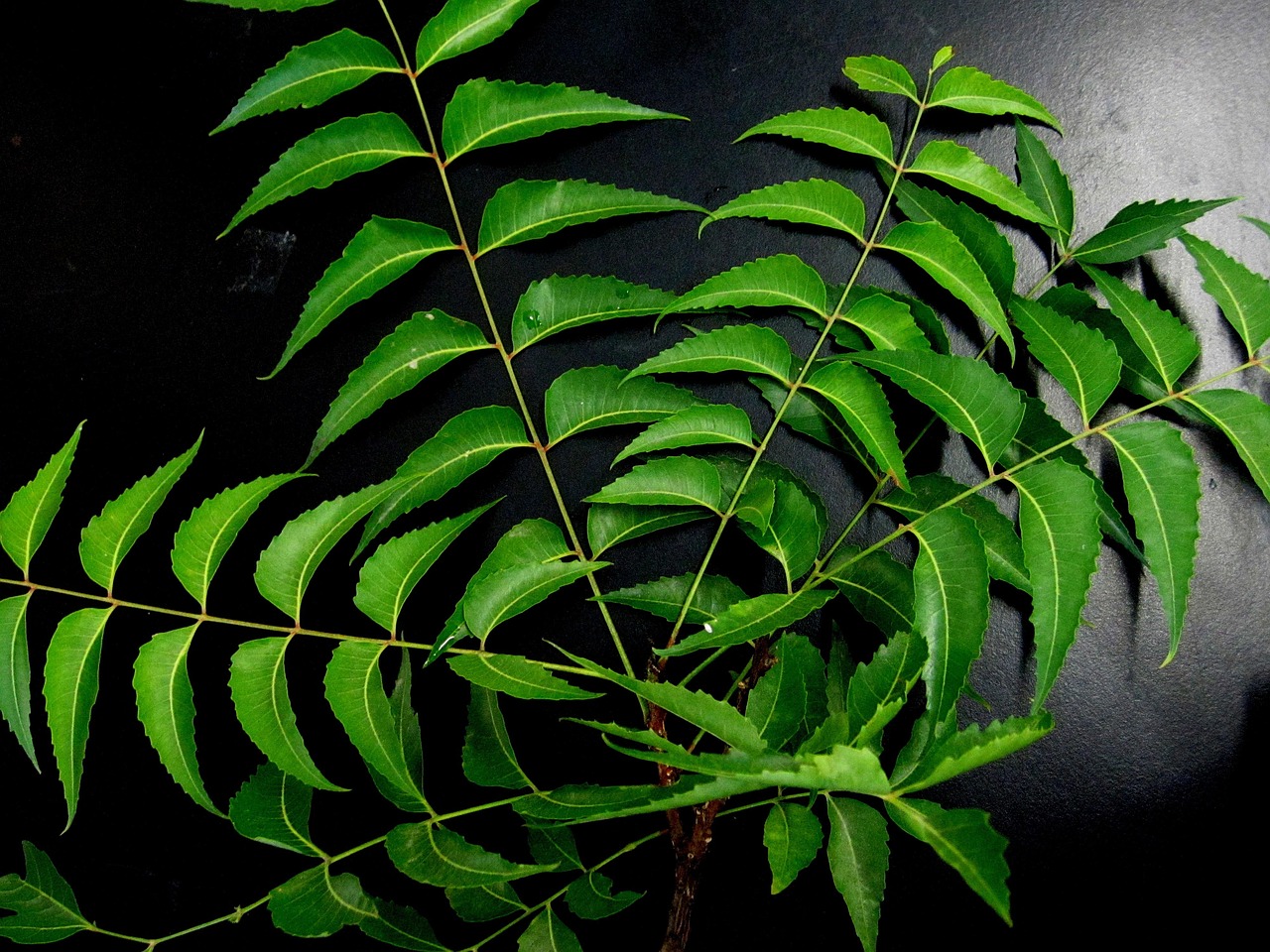The neem tree (Azadirachta indica) grows rapidly, typically reaching heights of 30 to 40 feet within a few years. It thrives in warm climates and can be cultivated for its natural pest control properties, with growth rates of around 3 to 4 feet per year under optimal conditions.
Understanding the Neem Tree
The neem tree, native to the Indian subcontinent, is often called the “village pharmacy.” Its leaves, seeds, and bark contain compounds that are highly beneficial for pest control. These natural insecticides have been used for centuries in agriculture and traditional medicine. The neem tree is not only valued for its pest-repelling properties but also for its ability to thrive in various soil types and climates.

One of the key factors in the neem tree’s popularity is its impressive growth rate. When planted in suitable conditions, the neem tree can establish itself quickly, making it an attractive option for farmers and gardeners looking to enhance their pest management strategies naturally.
Growth Characteristics of the Neem Tree
The growth characteristics of the neem tree are influenced by various environmental factors such as soil quality, water availability, and climate. Understanding these factors can help in optimizing its growth for pest control applications.
Optimal Conditions for Growth
To achieve the best growth rates, it is important to provide the neem tree with optimal conditions. These include:

- Sunlight: Neem trees thrive in full sunlight, requiring at least six hours of direct sunlight daily.
- Soil: Well-drained, sandy or loamy soil is ideal. Neem trees can tolerate poor soil conditions but flourish in nutrient-rich environments.
- Water: While neem trees are drought-resistant, they perform best with regular watering, especially during dry spells.
- Temperature: The neem tree prefers warm temperatures, ideally between 70°F and 100°F (21°C to 38°C).
Growth Rate Metrics
The growth rate of the neem tree can be quantified in various ways. Below is a table that outlines the average height increases based on age and environmental conditions:
| Age (Years) | Average Height (Feet) | Growth Rate (Feet/Year) |
|---|---|---|
| 1 | 3-5 | 3-5 |
| 2 | 10-15 | 5-7 |
| 3 | 20-25 | 8-10 |
| 5 | 30-40 | 6-8 |
This table illustrates that under favorable conditions, a neem tree can grow significantly within just a few years. This rapid growth not only provides shade and fruit but also helps in establishing a natural pest control system in agricultural settings.
Pest Control Properties of Neem
The neem tree’s growth is closely linked to its natural pest control abilities. The leaves contain azadirachtin, a compound that disrupts the life cycle of insects. This makes the tree an invaluable resource for sustainable agriculture.

The following are some key benefits of using neem for pest control:
- Insect Repellent: Neem oil acts as a deterrent for various pests, including aphids and whiteflies.
- Larvicidal Effects: Neem disrupts the growth and reproduction of insects, preventing them from reaching maturity.
- Non-Toxic: Unlike synthetic pesticides, neem is safe for humans, animals, and beneficial insects when used correctly.
The integration of neem trees into farming practices can lead to healthier crops and reduced reliance on chemical pesticides. This holistic approach not only supports plant health but also enhances biodiversity in agricultural ecosystems.
As more farmers and gardeners seek sustainable methods for pest control, understanding the growth rate and cultivation of the neem tree becomes increasingly important. With proper care and attention, this remarkable tree can offer both rapid growth and effective pest management solutions.
Propagation Methods for Neem Trees
Successfully growing neem trees requires understanding how to propagate them effectively. There are several methods to propagate neem trees, each with its advantages and considerations. The choice of propagation method can impact the growth rate and overall health of the tree.

Seed Propagation
One of the most common methods for propagating neem trees is through seeds. This method is straightforward and can be done by following these steps:
- Seed Selection: Choose healthy, mature seeds from a reputable source.
- Soaking Seeds: Soak the seeds in water for 24 hours to enhance germination rates.
- Sowing: Plant the seeds about 1 inch deep in well-draining soil. A mix of sand and potting soil is ideal.
- Watering: Keep the soil moist but not waterlogged. Water regularly until seedlings emerge.
- Transplanting: Once seedlings reach a height of about 6 inches, they can be transplanted to their permanent location.
This method can yield a high number of neem trees but does require patience as germination may take several weeks.
Cutting Propagation
Another effective method for propagating neem trees is through cuttings. This method can produce new trees more quickly than seed propagation. Here’s how to do it:
- Selecting Cuttings: Choose healthy branches that are about 6-8 inches long and have at least a few leaves.
- Preparing Cuttings: Remove the leaves from the lower half of the cutting. This helps reduce moisture loss.
- Rooting Hormone: Dip the cut end in rooting hormone to promote root growth.
- Planting: Insert the cutting into a pot filled with moist potting mix, ensuring it is stable.
- Watering: Keep the soil moist and place the pot in a location with indirect sunlight until roots develop.
Cutting propagation can lead to faster growth since the cuttings are already part of an established plant system.
Cultural Practices for Optimal Growth
Caring for neem trees involves implementing certain cultural practices that enhance their growth rate and health. These practices can significantly influence their ability to thrive and provide natural pest control benefits.
Fertilization
Proper fertilization is crucial for the nutrient requirements of neem trees. Here are some tips:
- Organic Fertilizers: Use compost or well-rotted manure to enrich the soil without chemical additives.
- Nitrogen-Rich Fertilizers: A balanced fertilizer that contains nitrogen, phosphorus, and potassium supports healthy growth.
- Frequency: Fertilize during the growing season, typically in spring and early summer, to ensure adequate nutrients during peak growth times.
Irrigation Practices
Irrigation is another vital aspect of neem tree care. Proper watering techniques can help establish a strong root system:
- Deep Watering: Water deeply and infrequently rather than shallow and frequently, encouraging deeper root growth.
- Drought Resistance: Neem trees are drought-resistant once established but benefit from regular watering in dry periods during their early years.
- Irrigation Systems: Consider using drip irrigation systems to provide consistent moisture without oversaturation.
Pest and Disease Management
While neem trees are resistant to many pests and diseases, they are not entirely immune. Understanding how to manage potential threats is essential for maintaining healthy trees.
Common Pests
The following pests may occasionally affect neem trees:
- Aphids: Small sap-sucking insects that can weaken plants.
- Mealybugs: Cotton-like pests that can infest leaves and stems.
- Scale Insects: These pests attach themselves to branches and can cause leaf drop.
Disease Management
Pest management also includes being aware of diseases that may affect neem trees:
- Root Rot: Caused by overwatering or poor drainage, this disease can kill roots. Ensure proper soil drainage.
- Leaf Spot: Fungal infections that cause discoloration on leaves. Remove affected leaves and avoid overhead watering.
By implementing these cultural practices, propagation techniques, and pest management strategies, growers can optimize the growth rate of neem trees, enhancing their effectiveness as a natural pest control solution in diverse agricultural settings.
Environmental Benefits of Neem Trees
Beyond their rapid growth and pest control properties, neem trees offer a variety of environmental benefits. Integrating neem trees into agricultural practices contributes positively to the ecosystem and enhances biodiversity.
Soil Health Improvement
Neem trees play a critical role in improving soil health. The following points highlight their contributions:
- Soil Fertility: The leaves and seeds of neem are rich in nutrients. When decomposed, they enrich the soil, promoting fertility.
- Organic Matter: Neem trees contribute organic matter to the soil, which enhances soil structure and moisture retention.
- Microbial Activity: Neem enhances beneficial microbial activity, which is vital for nutrient cycling in the soil.
Erosion Control
Neem trees can also help combat soil erosion, a significant issue in many agricultural areas:
- Root System: The extensive root system of neem trees stabilizes the soil, preventing erosion during heavy rains.
- Canopy Coverage: Their broad canopy provides shade, reducing soil temperature and evaporation, which helps retain moisture.
- Windbreaks: Planting neem trees as windbreaks can protect crops from wind damage, further supporting soil conservation.
Cultural Significance of Neem Trees
The neem tree holds cultural significance in many regions. Its uses extend beyond agriculture into traditional medicine and local customs.
Traditional Medicine
In various cultures, neem has been used for centuries for its medicinal properties. Here are some common applications:
- Antimicrobial Properties: Neem has natural antibacterial and antifungal qualities, making it useful for treating infections.
- Anti-Inflammatory Effects: Traditionally, neem has been used to reduce inflammation and relieve pain.
- Skin Care: Neem oil is often used in skin care products to treat acne, eczema, and other skin conditions due to its healing properties.
Cultural Practices
The neem tree is also significant in various cultural practices and rituals. Some examples include:
- Ceremonial Uses: Neem leaves are often used in weddings and festivals as symbols of purity and prosperity.
- Cultural Traditions: In some cultures, neem is planted around homes to ward off negative energies and pests.
- Educational Significance: Neem trees are often featured in educational programs about sustainable farming and environmental stewardship.
The Economic Value of Neem Trees
The economic benefits of neem trees are noteworthy. Their various products can provide income opportunities for farmers and communities.
Commercial Products
Neem trees yield several commercially valuable products:
- Neem Oil: Extracted from the seeds, neem oil is widely used in organic farming as a natural pesticide and insect repellent.
- Neem Cake: The residue left after oil extraction is rich in nitrogen and is used as an organic fertilizer.
- Medicinal Products: Various herbal products derived from neem are sold in health stores for their therapeutic benefits.
Job Creation and Income Generation
The cultivation and processing of neem can create employment opportunities. Some potential areas for job creation include:
- Agricultural Employment: Farmers can benefit from growing neem trees alongside other crops for additional income.
- Processing Facilities: Establishing facilities for extracting neem oil or producing herbal products can create jobs in local communities.
- Tourism Opportunities: Neem trees, especially those in traditional settings, can attract eco-tourism focused on sustainable practices.
The Role of Neem Trees in Sustainable Agriculture
Sustainable agriculture aims to meet current food needs while preserving environmental health for future generations. Neem trees can significantly contribute to these goals.
Pest Management Practices
The integration of neem trees into agricultural systems supports integrated pest management (IPM) strategies:
- Natural Pest Control: By using neem as a natural insecticide, farmers can reduce reliance on chemical pesticides, leading to healthier ecosystems.
- Biodiversity Enhancement: Neem trees attract beneficial insects and pollinators, promoting biodiversity within agricultural landscapes.
- Crop Rotation Benefits: Planting neem alongside other crops helps disrupt pest cycles, leading to healthier crop yields.
Sustainable Farming Techniques
Incorporating neem into existing farming practices promotes sustainability through various techniques:
- Agroforestry Systems: Combining neem with other crops creates a more resilient agricultural system that maximizes land use efficiency.
- Soil Conservation Practices: The deep rooting system of neem aids in moisture retention and reduces the need for artificial irrigation methods.
- Ecosystem Services: Neem trees provide vital ecosystem services such as carbon sequestration and habitat for wildlife.
The use of neem trees in sustainable agriculture not only enhances crop productivity but also fosters a healthier environment. By understanding the multifaceted role of neem trees, farmers can better utilize them as a resource for effective pest management and ecosystem preservation.
Future Prospects of Neem Trees in Agriculture
The future of neem trees in agriculture looks promising as more farmers and researchers recognize their potential. With the increasing demand for organic and sustainable farming practices, neem trees can play a vital role in addressing these needs.
Research and Development
Ongoing research into neem’s properties and applications is essential for optimizing its use. Here are some areas where research can provide valuable insights:
- Enhanced Formulations: Developing more effective formulations of neem oil and other extracts can improve pest control efficiency.
- Genetic Studies: Researching the genetic diversity of neem can lead to the discovery of superior strains with better growth rates and pest resistance.
- Integrated Pest Management (IPM) Studies: Further studies on neem’s role within IPM systems can help farmers create more sustainable pest management strategies.
Community Engagement and Education
Educating farmers and communities about the benefits of neem trees is vital for widespread adoption. Some ways to foster this engagement include:
- Workshops and Training: Organizing workshops to demonstrate neem cultivation techniques and pest management practices can empower local farmers.
- Collaboration with Agricultural Institutions: Partnering with universities and agricultural organizations can facilitate research and disseminate knowledge about neem’s benefits.
- Promoting Success Stories: Sharing successful case studies of neem implementations can encourage others to adopt similar practices.
Challenges in Neem Cultivation
While neem trees offer numerous benefits, certain challenges can affect their cultivation. Recognizing these challenges is essential for successful implementation:
- Pest Resistance: Over-reliance on neem products may lead to pests developing resistance, necessitating careful management practices.
- Climate Sensitivity: Neem trees require specific climatic conditions. Regions with extreme weather may find it challenging to cultivate them effectively.
- Market Accessibility: Farmers may face difficulties accessing markets for neem products, particularly in remote areas.
Policy Support and Initiatives
Government policies and initiatives play a critical role in promoting neem cultivation. Supportive measures can include:
- Subsidies for Neem Cultivation: Providing financial support for farmers to plant neem trees can encourage adoption.
- Research Funding: Allocating funds for research on neem and its applications can drive innovation in sustainable agriculture.
- Agricultural Extension Services: Enhancing extension services to include neem cultivation advice can educate farmers on best practices.
Final Thoughts
The neem tree stands out as an exceptional resource in the quest for natural pest control and sustainable agriculture. Its rapid growth rate, coupled with its pest-repelling properties, makes it an invaluable asset for farmers worldwide. By integrating neem trees into agricultural practices, growers can not only improve crop health but also contribute positively to environmental sustainability.
The various propagation methods, cultural practices, and commercial opportunities associated with neem trees highlight their versatility. As research continues to uncover new potentials and challenges emerge, the future of neem in agriculture appears bright. With proper education, community engagement, and supportive policies, neem trees can play a pivotal role in shaping a sustainable agricultural landscape that benefits both farmers and the environment.
In conclusion, the adoption of neem trees as a natural pest control solution represents a holistic approach to farming that aligns with modern environmental values. By embracing this ancient yet innovative practice, we can pave the way for a healthier planet while ensuring food security for generations to come.
